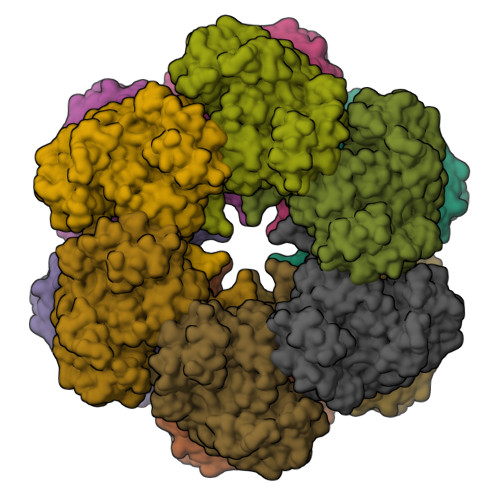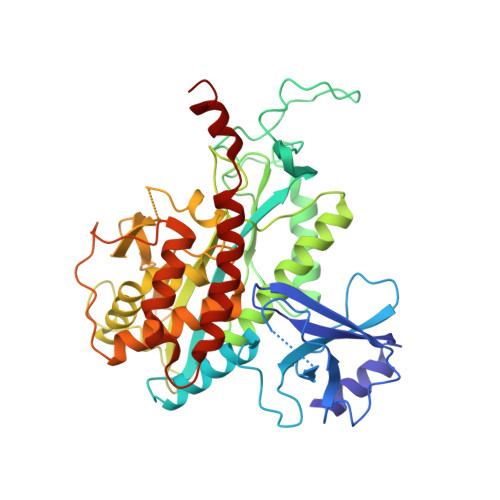Interactions of nucleotides with fully unadenylylated glutamine synthetase from Salmonella typhimurium.
Liaw, S.H., Jun, G., Eisenberg, D.(1994) Biochemistry 33: 11184-11188
- PubMed: 7727369
- DOI: https://doi.org/10.1021/bi00203a014
- Primary Citation of Related Structures:
1LGR - PubMed Abstract:
Glutamine synthetase (GS) catalyzes the ATP-dependent biosynthesis of glutamine from glutamate and ammonia in the presence of divalent cations. To gain insight into the structural basis of the feedback inhibition of GS by AMP, we have studied crystal structures of GS complexes with AMP and the related molecules: AMPPNP (a less hydrolyzable ATP analog), ADP, GDP, adenosine, and adenine. AMP is a feedback inhibitor of GS; ATP and ADP are cofactors, and AMPPNP, GDP, adenosine, and adenine are also GS inhibitors. GS used in this study is from Salmonella typhimurium and is free of covalent modification by adenylylation. All of the crystals examined contain two bound MN2+ ions per GS subunit. The X-ray structures show that all nucleotides bind at the same site, the cofactor ATP binding site, as do adenosine and adenine. Thus from X-ray structures, AMP, adenosine, adenine, and GDP would be expected to inhibit GS-Mn by competing with the substrate ATP for the active site. This suggestion from the crystal structures that AMP is competitive with respect to ATP is supported by kinetic measurements using the biosynthetic assay.
- Institute of Molecular Medicine, School of Medicine, National Taiwan University, Taipei.
Organizational Affiliation:




















